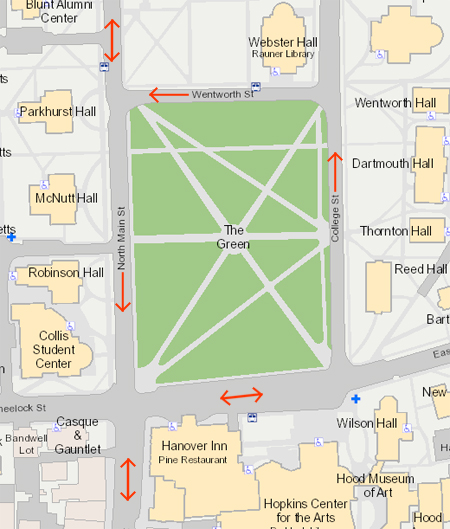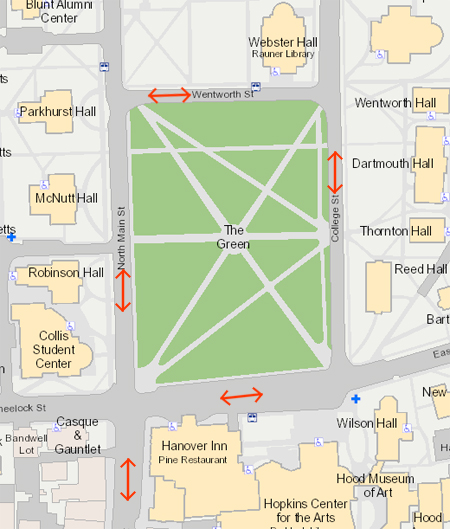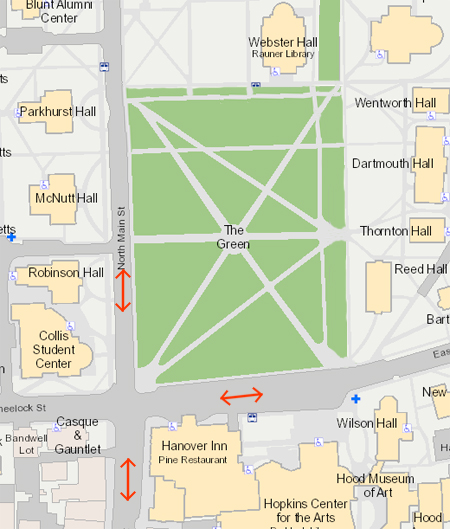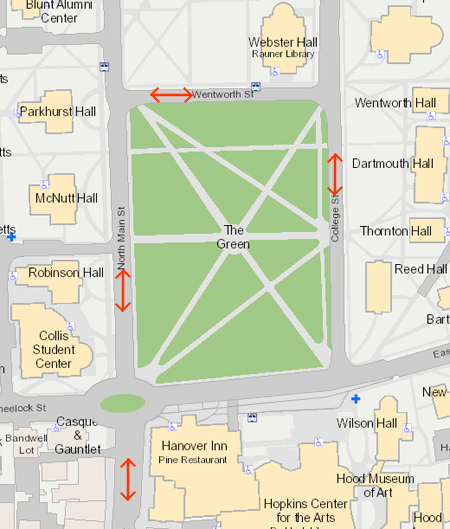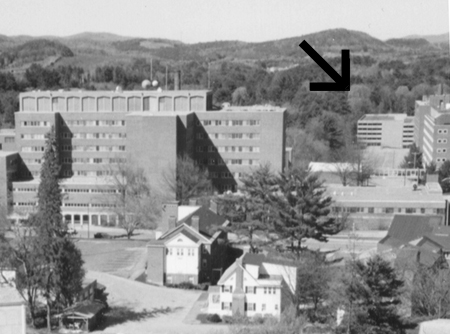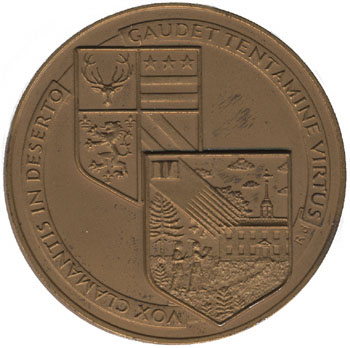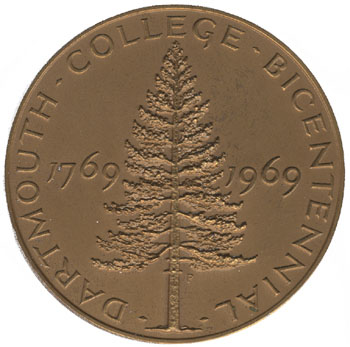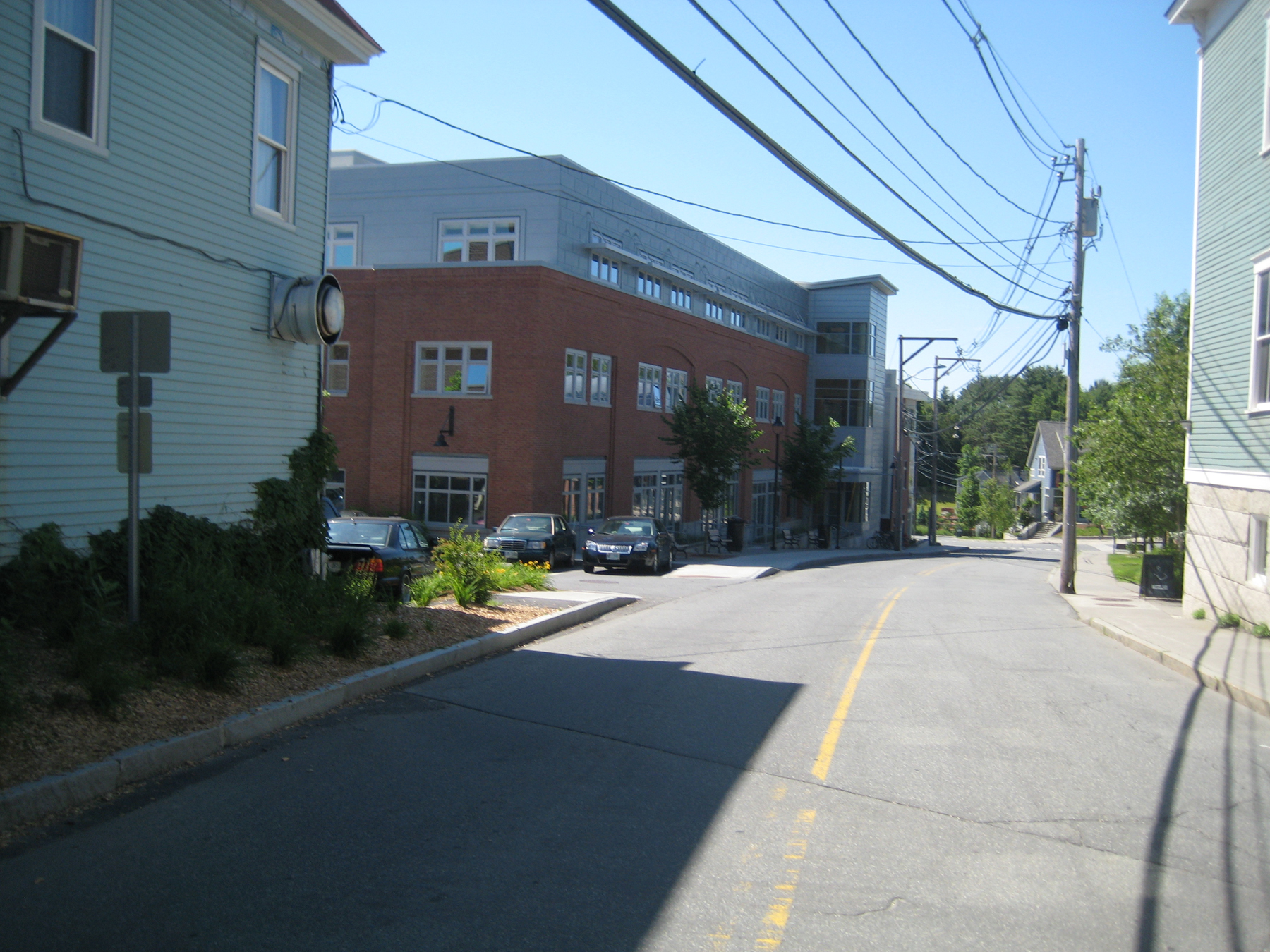It does seem a little strange that Dartmouth is replacing the roof over the Karl Michael Pool in Alumni Gym (see The Dartmouth) so soon after the 2006 renovation. It turns out that the roof insulation failed some time ago, and the college sued the renovation architects and builders back in 2012 (see the order on preliminary motions pdf; the Union Leader article). The suit is ongoing.
Charles Collis has died at age 99 (The Dartmouth).
Dartbeat has a Q&A with dlandstudio architect Susannah Drake ’87.
Two items from the Planner’s Blog: New chairs with built-in writing tablets to replace the old ones in Dartmouth Hall, and a new paint scheme for the pedestrian refuge in the middle of Wheelock Street by the Hop. On the Planning Board agenda for June are a request to modify site plans for a renovation of the porte-cochere area of the Inn and a review of the site plan “for vehicular, pedestrian & bus stop improvements” in front of the Hop.
The new (replacement) Class of ’65 Bunkhouse at Moosilauke is being designed by Maclay Architects (prospectus pdf). Timber will come from the college wood at Corinth Vt. (Grant newsletter pdf). The same firm is evaluating the state of the Ravine Lodge itself in anticipation of extensive future work (The Dartmouth).
The Hill Winds Know Their Name (pdf) is a beautifully-produced booklet by the late Professor Wood about the college’s war memorials. One suggestion for the next edition of this valuable work involves the transcription of the Stanley Hill inscription on page 13:
IT IS DEDICATED IN HIS NAME TO THE BRAVE AND CLEAN OF HIS BELOVED DARTMOUTH
It should read:
IT IS DEDICATED IN HIS NAME TO THE BRAVE AND CLEAN YOUNG MANHOOD OF HIS BELOVED DARTMOUTH
(See the shower room plaque; see also Kenneth C. Cramer, “Dick Hall and His Friends,” Dartmouth College Library Bulletin (April 1992).)
Interesting examples of public or urban typography from Tobias Frere-Jones.
A Google aerial shows the preparation for the sorority construction on Occom Ridge, and an earlier Street View captures the OnTarget guy marking utilities on the sidewalk.
Who knew there were so many new senior societies? The official ORL page lists a couple “new” ones that have survived (Abaris, Griffin/Gryphon) along with several even newer ones (Andromeda, Chimera, Olympus, Order of the Sirens).
The new Hop entrance under the Inn’s Grand Ballroom (Street View) was labeled “Minary Conference Center” when it was finished last year (see the image at the DUSA page). Perhaps it makes sense, since that is the most direct route to the conference center. One of these days someone will build a real, direct, and prominent entrance to the Hopkins Center proper.
Remember John Flude, the London pawnbroker who had a large medal engraved and sent to the president of Dartmouth in 1786? (See Dick Hoefnagel, “John Flude’s Medal,” Dartmouth College Library Bulletin (November 1991).) Here’s his testimony in the Old Bailey regarding one James Smith, indicted for stealing on July 10, 1764 a gold ring from Flude’s shop:
When he was gone, I opened the paper to look at my ring, and found I was deceived; I ran out, and happened to take the right way: I ran up Hart-street, and at the upper end I saw him; when I had been twenty or thirty yards in Monkwell-street, he run as hard as he could, and turned into Silver-street; I pursued him into the Castle and Faulcon yard: he stopped running, and was opening the paper to look at the ring: I got up to him, and laid hold of him, and said, my friend, you shall not drop the ring: I took hold of his hand, and led him to the first public house I came to, and desired Mr. Hayns, who was there, to open the prisoner’s hand; he did, and there I took out my ring: bringing him back in Monkwell-street, he desired I would not take hold of his coat to expose him, saying, he had a great family; I let go his coat: when we came to the corner of Hart-street, he endeavoured to escape, and ran as hard as he could; and we took him again in Wood-street.
Smith was found guilty of stealing.
